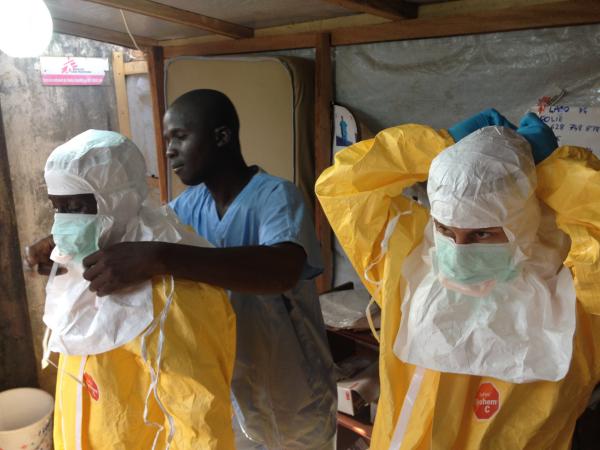It's been three and a half years since the last Ebola outbreak in West Africa, when 28,600 people in Liberia, Guinea and Sierra Leone were infected and over 11,300 killed. Despite the WHO declaring the region Ebola-free two years later, there is a new wave of cases, this time in the Democratic Republic of Congo (DRC.)
One big difference between 2014 and today is the existence of a vaccine. In fact, the outbreak in 2014 is responsible for the push to create an effective vaccine. Health officials announced this week that 4,000 doses of an experimental Ebola vaccine have already arrived in the DRC, to be distributed to the areas currently in the midst of the outbreak.
The vaccine has been distributed before. In March 2016, nearly 800 people were ring vaccinated (the vaccination of susceptible individuals in the area around an outbreak of an infectious disease) on an emergency basis with this vaccine when another Ebola outbreak occurred in Guinea.
The vaccine is new, there is no denying that. But, does it work? In Guinea, it seemed effective. However, a recent paper in The Lancet questions its efficacy.
How is the vaccine made?
The vaccine (rVSV-ZEBOV) is a recombinant vaccine meaning that it consists of multiple parts of different viruses that have been put together. This is done for a few reasons, not the least of which is safety. Making a vaccine in this way is incredibly safe, carrying zero risk that someone could get Ebola from it, because it contains only a small piece of Ebola virus.
The vaccine contains a specific portion of the Ebola virus, a glycoprotein that is on the outside of the Ebola virus, that will stimulate the immune system to make a protective response against the virus. Once the immune system sees this glycoprotein, it will stimulate the production of antibodies which provide protection in the short term and memory B cells that will be reactivated to provide long-lasting protection upon a second exposure to the virus.
The Ebola glycoprotein is attached to a virus that can replicate in cells. This mimics an actual viral infection without the possibility of causing an illness. In this case, the glycoprotein is tacked onto the vesicular stomatitis virus (rVSV). When the rVSV virus replicates in cells, it exposes the immune system to the Ebola glycoprotein, and elicits an immune response.
Both the type and size of that response determine how effective the vaccine is against infection.
The good news is that the trials have revealed that roughly half of people vaccinated experience mild to moderate side effects including headache, fatigue, and muscle pain. But, those are all acceptable when the alternative is Ebola.
So, will it work? Time will tell. But, it's the best that we have in our arsenal at the moment. And, even if it isn't perfect, anything that reduces the chance of getting Ebola is a vaccine worth getting.
---------------------------------------------------------------------------------------------------------------------------------------------------
This vaccine, rVSV Ebola vaccine (rVSV-ZEBOV) is currently licensed to Merck, although it was originally developed at the National Microbiology Laboratory, part of the Public Health Agency of Canada (PHAC) and licensed to BioProtection Systems (NewLink Genetics).




